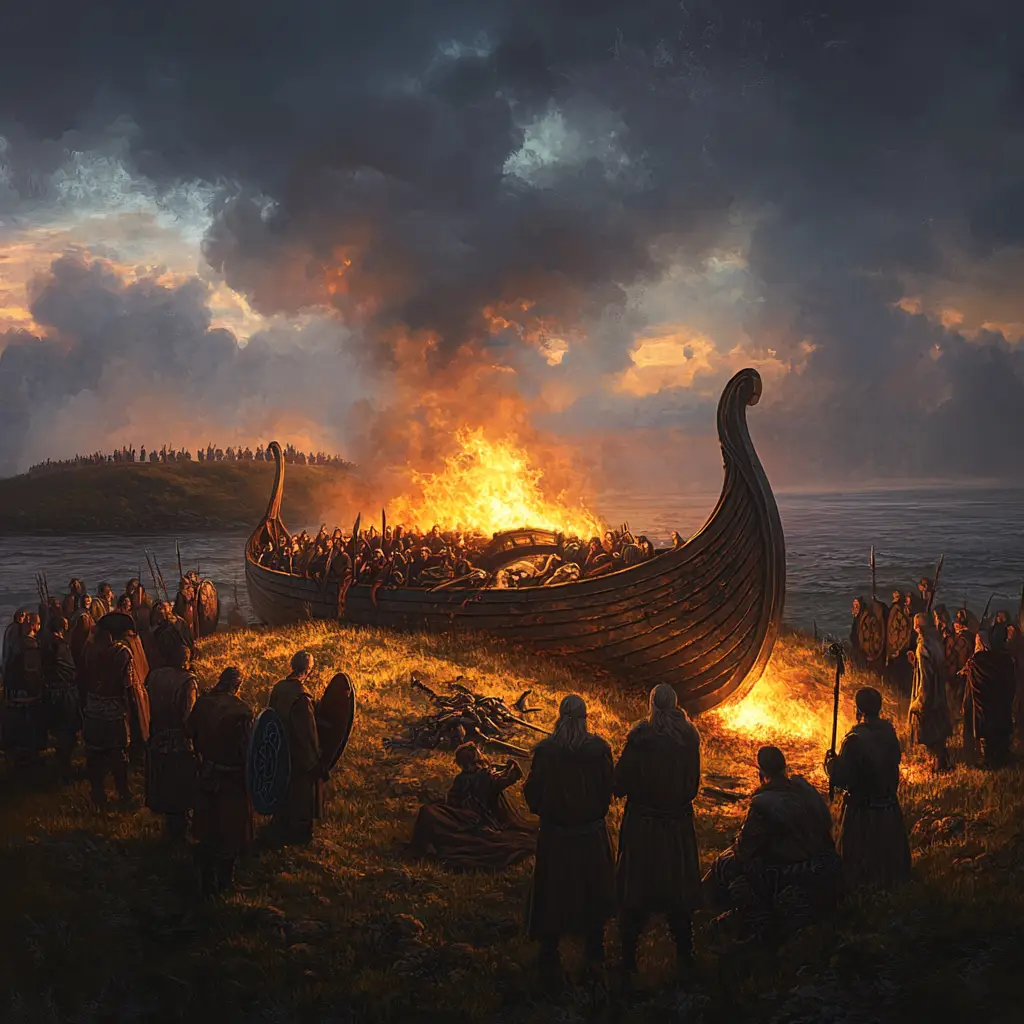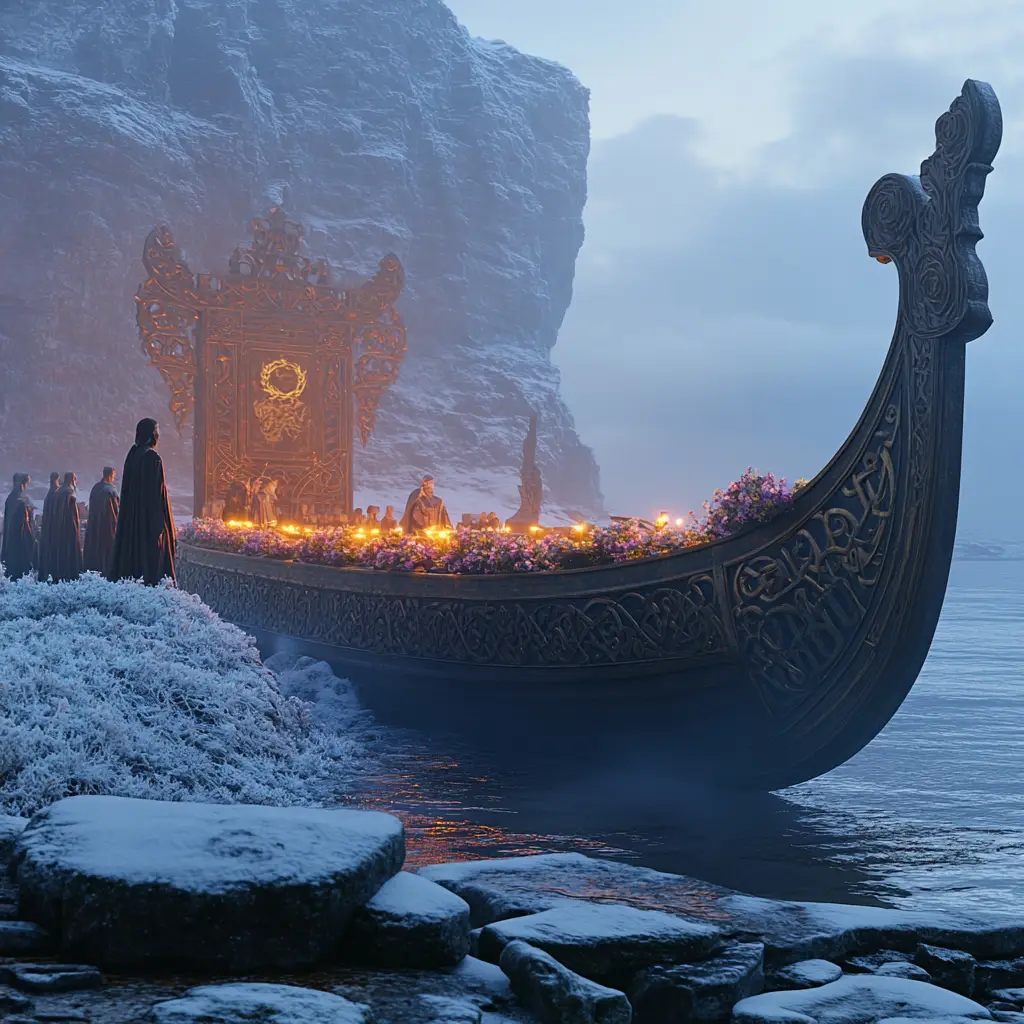Viking ship burials were elaborate funerary rituals practiced by the Norse people, especially for high-status individuals like chieftains, warriors, and nobility. These burials showcased wealth, status, and belief in the afterlife, where the dead would need their possessions in the next world.
Types of Viking Ship Burials
Full Ship Burials – A complete ship was buried, often in a mound, along with the deceased and grave goods.
Cremation Ship Burials – A ship (or a symbolic version of one) was set on fire in a ritualistic send-off, then buried.
Ship-Shaped Stone Settings – Some burials used stones arranged in the shape of a ship instead of an actual vessel.
Grave Goods & Offerings
Buried with the deceased were:
Weapons & Armour – Swords, shields, and spears for warriors.
Jewellery & Clothing – Gold, silver, and finely crafted textiles.
Animals & Slaves – Horses, dogs, and sometimes sacrificed servants to accompany the dead.
Food & Tools – Items needed for the afterlife journey.
Famous Viking Ship Burials
Oseberg Ship (Norway, 9th Century)
One of the most well-preserved ship burials.
Contained two high-status women, rich grave goods, and intricate carvings.
Gokstad Ship (Norway, 9th Century)
A warrior’s burial with shields, a tent, and several sacrificed animals.
Larger and more battle-ready than the Oseberg ship.
Sutton Hoo (England, 7th Century)
While Anglo-Saxon, it shares similarities with Viking ship burials.
Included a wealth of weapons, treasures, and a large ship.
Symbolism & Beliefs
The ship symbolized a passage to the afterlife, possibly to Valhalla (for warriors) or Hel (for those who died of natural causes). Burning the ship may have been a way to free the soul or prevent the dead from returning as draugr (revenants).



